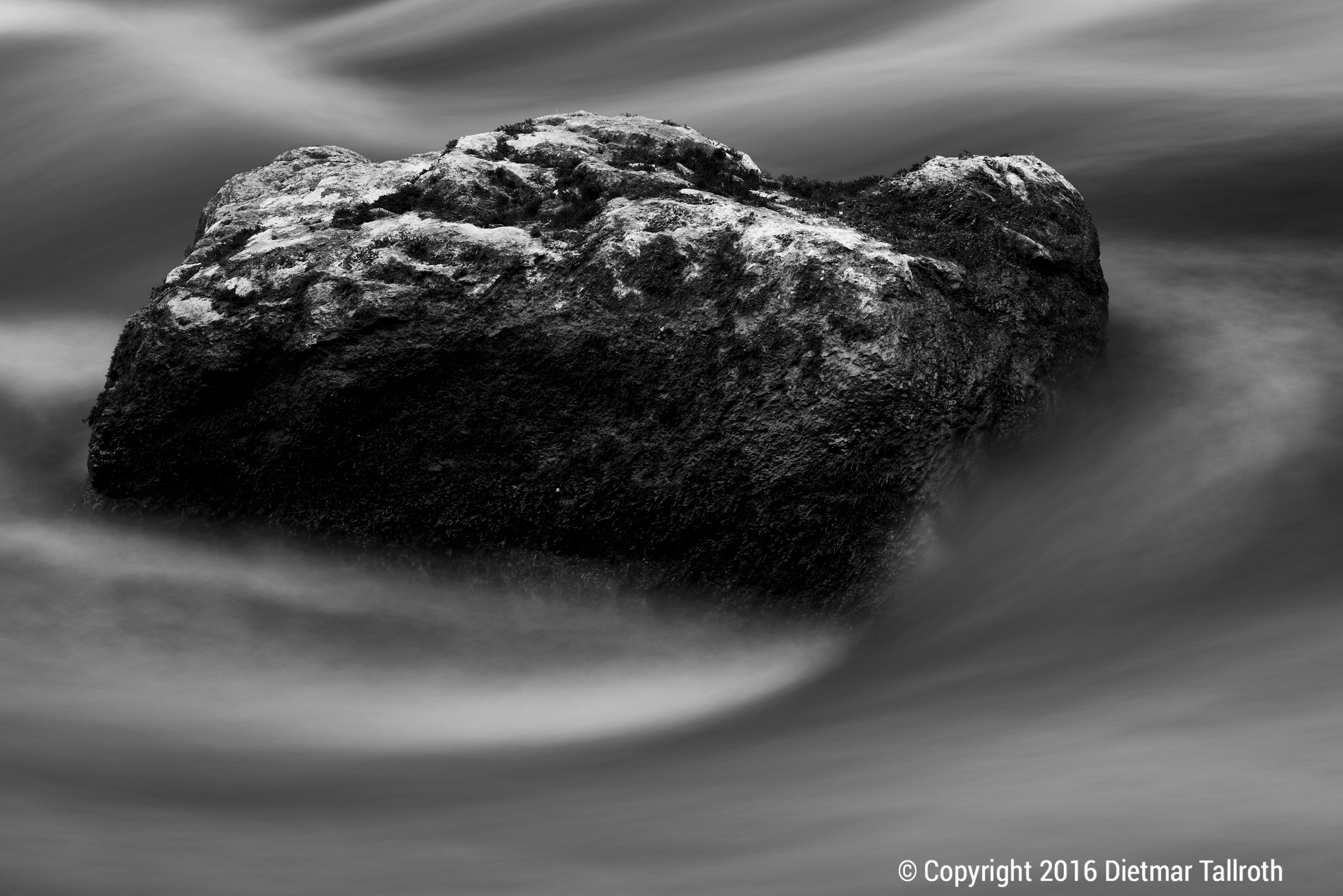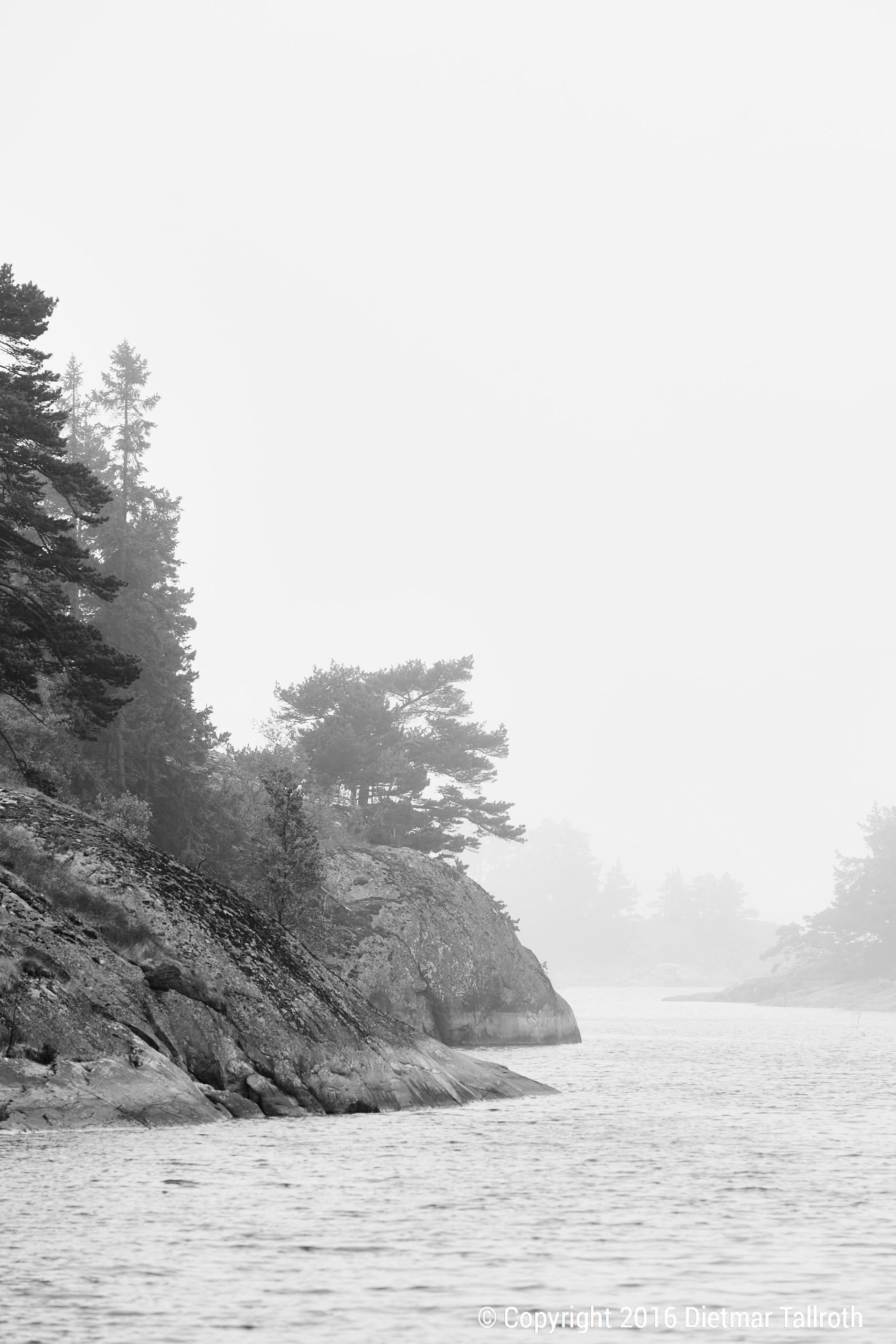
In the previous post in this series I explained some of the foundations related to the role of exposure time in photography. This time I’ll share some thoughts on uses of long exposure times as an artistic tool, especially in scenes with moving water.
The effect has been demonstrated often, so let’s just summarize it briefly. Moving water looks very differently depending on the exposure time. With very short exposures, the movement will freeze, like in this crashing wave exposed at 1/1000th of a second.
In contrast, longer exposure times will increasingly smooth out water until it dissolves into a fluffy mist. Here are two exposures of the same scene, one at 1/8th of a second and the other with 25 seconds exposure time.
Now, when looking at this different ways to photograph water, I think it is worth noting that none of these is “realistic”, even though the shorter exposure might look more realistic than the longer ones. But our eyes can neither freeze a scene nor stretch the viewing time. And, if I remember correctly, the time resolution of our eye is somewhere at around 1/100th of a second.
When we analyze the visual effects produced by these different exposures, I’d say that the first one (the crashing wave) shows both the force and fragmentary nature of water. The second shows the flow of water and its force against the stone. And, finally, the third actually almost removes the water from the picture and highlights the stone, with the flowing water creating negative, or empty, space around it. This third version only hints at the force of water, but that force isn’t the “topic” of the picture.
It may be also worth noting that none of these effects can be convincingly added in Photoshop, but can only be produced by varying the time of exposure. The photographer can, however, stretch and increase exposure time by closing the aperture and/or by putting sunglasses on the lens (in form of darkening glass filters). In my work, I have avoided long exposures like in the third picture above until about a year ago. Why? Because the “fluffy water” effect is a rather overused cliché in current landscape photography.
But if you look at my current portfolio, you will find long exposures with water – a lot. Actually, it has almost become on of the defining elements in the aesthetics of my photography. So what caused this change of mind? To explain, I’ll have to take a step back and look at one of the fundamentals of landscape photography and ask: what is the photographer doing, when he/she points a camera at a landscape?
A common answer is: nature is messy. And it is worse when photographed. All the chaotic twigs and things the eye blends out from a scene brutally show on a photograph. Therefore, by selection and composition, the photographer creates order from this mess.
While I agree with the statement that a camera randomly pointed at a natural scene will produce a mess, I tend to disagree with the first statement though, namely that this is due to an inherent messiness of nature. I rather think the opposite is true: nature is a highly ordered, although fractal, environment and the camera is just badly tuned to show it. So for me the “mission” of a landscape photographer is to make this inherent order visible, or at least visually readable. A landscape scene can be highly complex; if it is readable then the picture can still be successful. An example for this is Ansel Adam’s “Tenaya Creek”.
Now, I live at the coast in a country with 180.000 lakes. Thus the likelihood that water will show up in my photographs is statistically significant. And the longer I was looking at water in different forms, the more it seemed to me like it should be shown not as individual waves and droplets, but like a body, an empty but forceful space surrounding the material forms not only in the sea and lakes, but also in form of mist and clouds. And the only way to melt away the individual moment in the movement of water is to expose for a longer time.
I know, this begs for an example. Here you go:
In the shorter exposure to the left, the ripples in the sea separate the water from the mist and sky and actually distracts from the atmosphere of the picture. In the longer exposure to the right sky, mist and sea are unified. If at the same time the longer exposure gives the notion that melancholy drifts through the scene like a lost soul – even better.
So much for water in in long exposures. I already busted again my self-imposed 600 words limit. Next time I’ll have a closer look at the issue of realism when it comes to exposure times. See you then!



